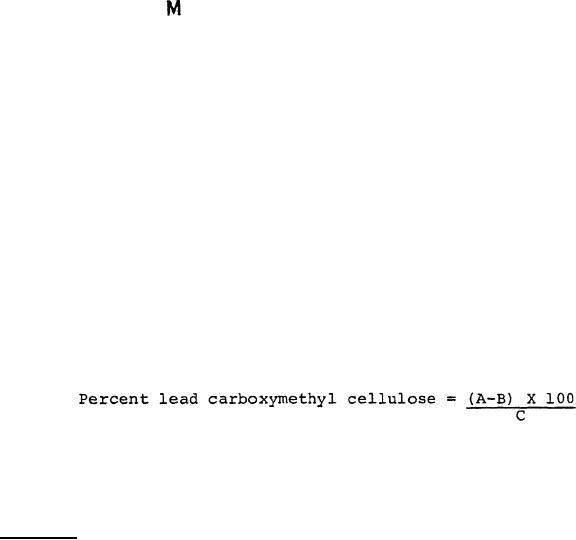 |
|||
|
|
|||
| ||||||||||
|
|  MIL-L-14758 (MU)
in weight of the crucible to percent insoluble in nitric acid.
(NOTE: Caution must be exercised. In this test the lead azide
is dissolved in dilute nitric acid, a process which gives rise
to the evolution of hydrazoic acid gas which is toxic but oderless.
Therefore, this operation should be done in a fume hood.).
Transfer contents of crucible into a U.S. Standard Sieve 230 and
visually observe if any particles are retained on this sieve.
4.3.6 Lead carboxymethyl cellulose, Major defect, Defect
Code No. 12001.-Transfer 2.00 gins. of a dried sample of the lead
azide to a 250 ml. beaker. Add 75 ml. of glacial acetic acid to
the beaker and place beaker with contents on the steam bath,
covered with a watch glass, for 30 minutes. Filter hot through
a tared sintered glass crucible. Use an additional 50 ml. of
hot glacial acetic acid to rinse beaker and crucible. Treat
residue in crucible with three 20 ml. portions of cold 10 percent
lead acetate solution and applying gently suction. Wash thoroughly
with hot distilled water, dry at 105 plus or minus 5C. for 1
hour, cool in a desiccator and weigh. Calculate the percentage
of lead carboxymethyl cellulose as follows:
where:
A = weight of crucible plus residue
B = weight of crucible
C = dry weight of sample
CAUTION: In this test is an evolution of hydrazoic acid gas
which is very toxic. The determination should be performed
in a fume hood.
4.3.7 Bulk density, Major Defect, Defect Code No. 13001
4.3.7.1 Preparation of specimen
4.3.7.1.1 Applicable to dry lead azide.-Transfer a portion
of approximately 4 gins, to a drying dish. Place the dish and
contents into oven, maintained at 65 degrees C. plus or minus
5C for 1 hour and then cool in a desiccator to room temperature.
12
|
|
Privacy Statement - Press Release - Copyright Information. - Contact Us |